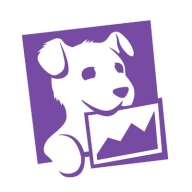

OpenText Diagnostics and Datadog are key players in diagnostics and monitoring solutions. Datadog seems to have the upper hand with its comprehensive cloud-native features and scalability, making it a popular choice among customers.
Features: OpenText Diagnostics provides powerful troubleshooting, deep integration capabilities, and application lifecycle visibility. Datadog offers cloud-native monitoring, rich visualization, and extensive integration capabilities with tools like AWS and Slack.
Room for Improvement: OpenText Diagnostics could enhance its cloud adaptation, ease of integration, and agent performance. Datadog might improve its cost predictability, APM detail for some programming languages, and user interface complexity for non-developers.
Ease of Deployment and Customer Service: OpenText Diagnostics relies on substantial integration effort but is supported by strong customer service. Datadog offers an easy setup and user-friendly interfaces, ensuring a streamlined deployment and quicker time-to-value.
Pricing and ROI: OpenText Diagnostics offers upfront costs with long-term ROI benefits for enterprises. Datadog's flexible pricing model scales with usage, providing quick returns though it may be costlier under extensive use compared to traditional pricing models.

Datadog is a comprehensive cloud monitoring platform designed to track performance, availability, and log aggregation for cloud resources like AWS, ECS, and Kubernetes. It offers robust tools for creating dashboards, observing user behavior, alerting, telemetry, security monitoring, and synthetic testing.
Datadog supports full observability across cloud providers and environments, enabling troubleshooting, error detection, and performance analysis to maintain system reliability. It offers detailed visualization of servers, integrates seamlessly with cloud providers like AWS, and provides powerful out-of-the-box dashboards and log analytics. Despite its strengths, users often note the need for better integration with other solutions and improved application-level insights. Common challenges include a complex pricing model, setup difficulties, and navigation issues. Users frequently mention the need for clearer documentation, faster loading times, enhanced error traceability, and better log management.
What are the key features of Datadog?
What benefits and ROI should users look for in reviews?
Datadog is implemented across different industries, from tech companies monitoring cloud applications to finance sectors ensuring transactional systems' performance. E-commerce platforms use Datadog to track and visualize user behavior and system health, while healthcare organizations utilize it for maintaining secure, compliant environments. Every implementation assists teams in customizing monitoring solutions specific to their industry's requirements.
We monitor all Application Performance Monitoring (APM) and Observability reviews to prevent fraudulent reviews and keep review quality high. We do not post reviews by company employees or direct competitors. We validate each review for authenticity via cross-reference with LinkedIn, and personal follow-up with the reviewer when necessary.